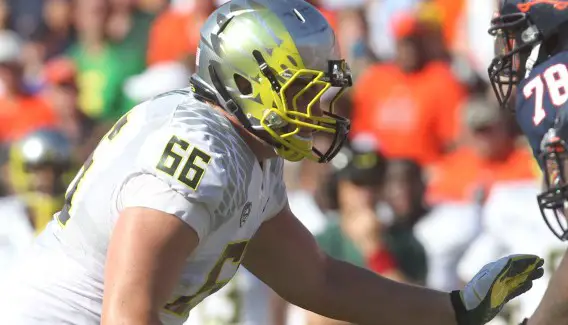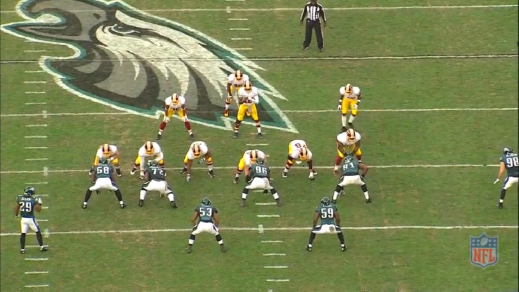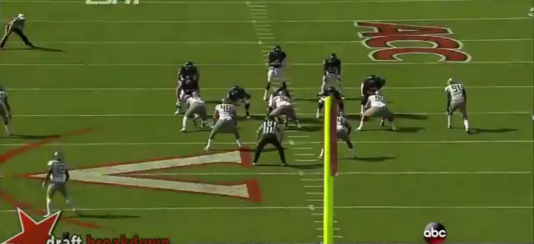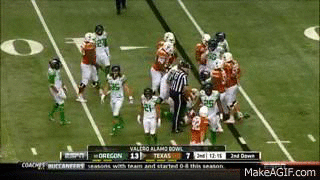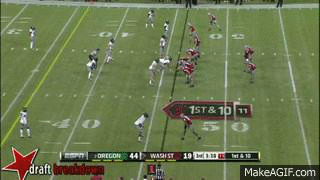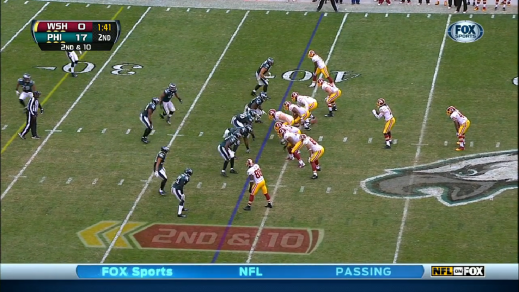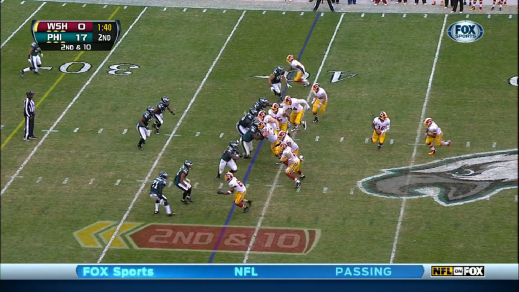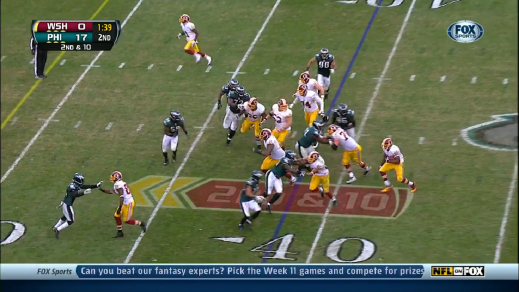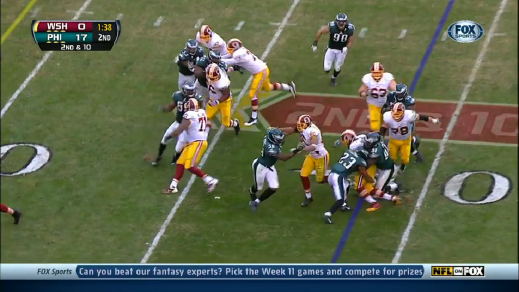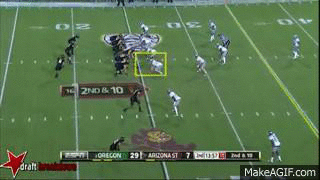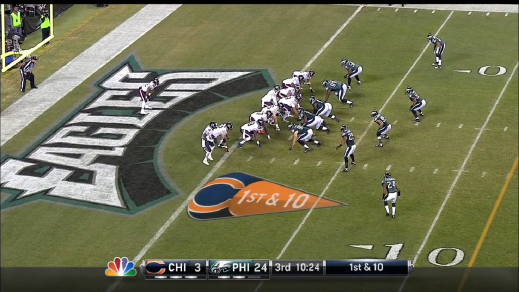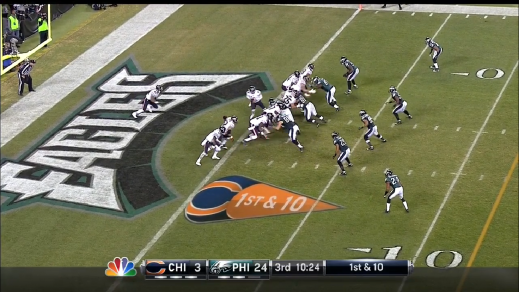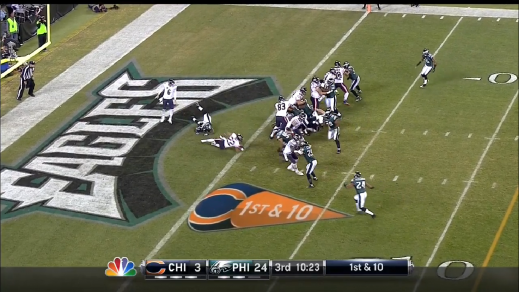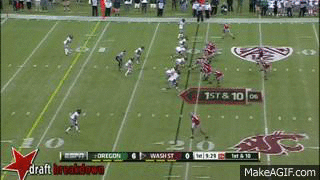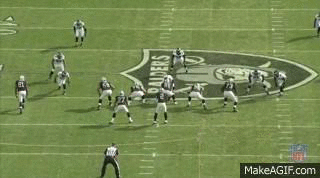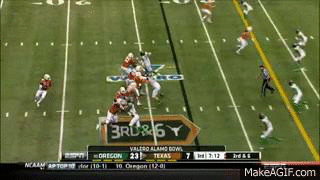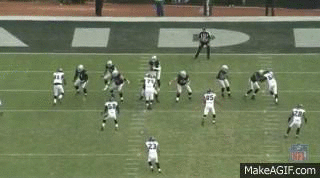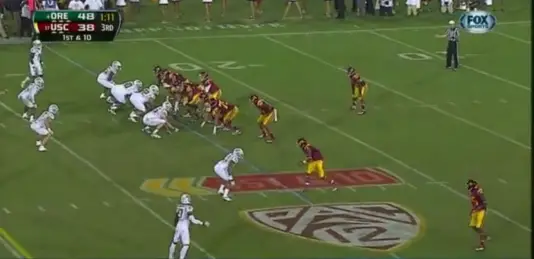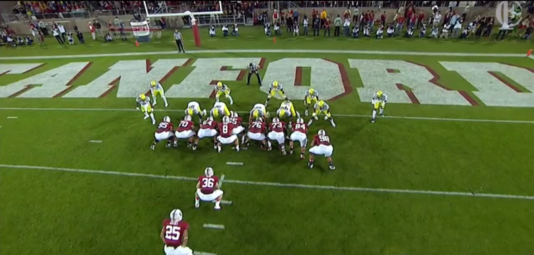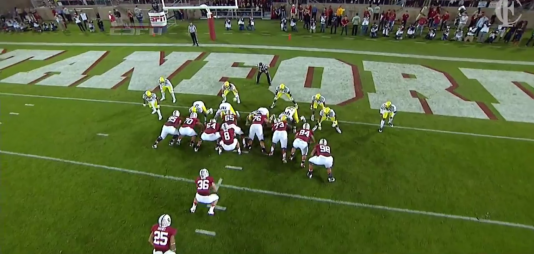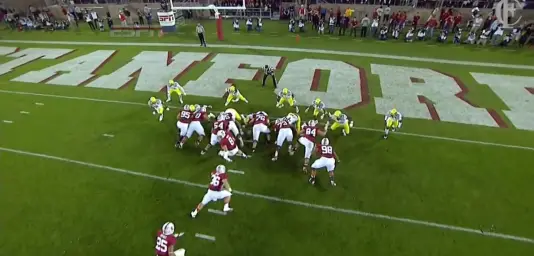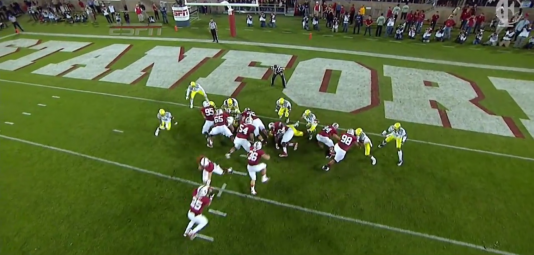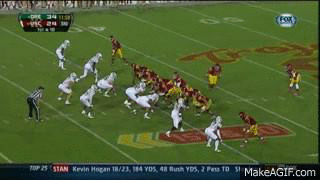Chip Kelly didn’t just bring his offensive scheme with him to the Philadelphia Eagles. For the second time in his coaching career, he changed a 4-3 base defense to his 3-4 scheme. To ease this transition in Year 2, Kelly drafted a player in the fifth round who he relied on during the defensive scheme change at Oregon: defensive lineman Taylor Hart. Hart’s arrival is a sign that the Eagles’ defensive scheme, like its offensive counterpart, has its roots in Oregon.
The Eagles had inadequate defensive line depth last season behind starters Fletcher Cox and Cedric Thornton. Vinny Curry is a terrific pass-rusher, but had mixed results with two-gap assignments. Clifton Geathers made a few nice plays on run defense, but did not use his size enough. Hart is a well-rounded player who should bolster the defensive line’s depth.
Philadelphia and Oregon’s base defense is designed to clog gaps and free up linebackers. Hart’s job in this front is mainly to engage offensive linemen and prevent them from reaching the second level.
Hart generally holds up well at the point of attack. A push against the guard on this play gives the linebacker time to surge into the backfield.
Kelly’s defensive linemen must also disengage blockers when running backs approach their gaps.
Eagles defensive line coach Jerry Azzinaro, and his successor at Oregon, Ron Aiken, instruct their players to position their heads in their primary gap, one of two gaps they must control. Hart initially looks in at the B-gap, but he then uses a swim move to get in his secondary gap (the C-gap) and make the tackle.
Azzinaro has the Eagles defensive ends use the same technique that Hart used at Oregon.
Watch Fletcher Cox (right DE).
Cox’s head goes to the B-gap.
He uses his hands to disengage from the guard.
Two-gap defensive linemen might not get the gaudy stats of their one-gap counterparts, but they make a run defense flourish.
Kelly’s defensive linemen do not exclusively two-gap. Oregon defensive coordinator Nick Aliotti sometimes capitalized on Hart’s versatility by calling one-gap and two-gap stunts simultaneously.
Hart slants to the B-gap and races into the backfield. The other defensive linemen are two-gapping as he makes the tackle.
Eagles defensive coordinator Billy Davis also blends one-gapping and two-gapping.
Cedric Thornton is the three-technique, while Bennie Logan and Fletcher Cox are at their usual spots.
Thornton penetrates through the B-gap, while Logan and Cox two-gap.
The Bears are overwhelmed and Thornton exploits them for a safety.
Kelly has shown some favoritism toward linemen like Hart who use their athleticism to generate a deadly interior pass rush. A strong pass rush by the defensive line frees up resources for the defensive coordinator to use in coverage.
Using two-gap technique, Hart turns his head to the B-gap and sees the quarterback sitting in the pocket. He uses his athleticism to disengage the offensive tackle and sack the quarterback.
On this play, defensive coordinator Nick Aliotti uses just two down linemen with Hart as a stand-up edge-rusher.
This unique front allowed Aliotti to put eight men in coverage. Generating an effective pass rush with such few players is a nightmare for quarterbacks who can’t find an open man.
Like Aliotti, Davis tries to avoid tipping his hand on passing downs. He uses special packages to disguise where the pressure is coming from. Athletic defensive linemen like Cox are crucial in making these packages work.
The fact that Hart has a track record of success using both a two-point and three-point stance must appeal to Davis. He brings a level of athleticism to the defensive line group that resembles Cox’s, giving Davis more options with his third-down packages.
Hart also played nose tackle in the Ducks’ nickel package. Oregon sells out to stop the pass by taking their slower linemen off the field, but keeping Hart on it.
He gets a nice push on the center and mirrors the quarterback until he gets the sack.
Hart could play nose in special packages for the Eagles, too. Cox, Thornton and Curry each played nose in the Eagles’ nickel last season and Hart’s athleticism is comparable to theirs.
Notice how Curry mirrors the quarterback. Hart is a more natural two-gap defender, so he will likely be more potent for the Eagles as a nose in this situation.
Hart’s lateral agility gave Aliotti flexibility to design zone blitzes. The zone blitz sent linebackers and/or defensive backs on a blitz, while Hart dropped back in zone coverage.
Hart does a great job covering the tight end. Oregon generates pressure without putting its coverage at risk because the offensive linemen are expecting Hart to attack up-field. Rushers mostly get one-on-one matchups and have a better chance of generating pressure. Davis is fond of disguising pressure and could use similar concepts with Hart at his disposal.
Hart will need to correct some things to reach his potential in the NFL. Many of his problems originate from his unusual “frog-like” stance, where his butt is pointed at the ground.
Defensive linemen typically have their butts pointed slightly up to fire out low in their stance. Hart has his body weight shifted low, meaning that he will naturally come out of his stance too high.
He consequently struggles to generate explosion out of his stance, which is especially perilous in the red-zone.
Hart is the defensive tackle lined up across from the right guard. Stanford calls a power run.
The guard wins the battle at the line of scrimmage.
He exploits Hart’s momentum by pushing him away from the gap.
The guard drove him about two yards and pinned him, while the running back hit the hole for a touchdown. Hart must not lose battles at the line of scrimmage or teams will continue to run at him.
Hart also tends to not diversify his hand moves. He will often try to bull rush an offensive lineman and gets stalled.
Because he uses a bull-rush too frequently, Hart gets stood up on this play by a lineman who already knows what’s coming. Mixing in more swim moves, rip moves or spin moves would help Hart beat offensive linemen more consistently.
Bottom Line
Although Hart must fix some aspects of his technique, he has an advantage over most rookies due to his familiarity with Kelly and Azzinaro. His learning curve for the defensive scheme should be minimal. The fact that Kelly drafted Hart and had a third-round grade on him, illustrates the high level of trust between them.
With that being said, he will face some competition from a deep group of linemen. It is hard to foresee either Cox or Thornton losing their starting jobs this season, and Curry is too talented to ride the bench. Joe Kruger, the 2013 seventh-round draft pick who has been getting looks with the first team and second team in OTAs, could be a formidable rival for playing time. Hart is in an excellent environment to become a key role-player but will be pressed for playing time.
Top Photo by Andrew Shurtleff
Joe Kearns is a senior at the Pennsylvania State University majoring in Economics. He intends to pursue a career in the banking and financial services industries, but is also a lifelong diehard Philadelphia Eagles fan who enjoys analyzing college and pro football film as a hobby. Along with being a fan, Joe’s football knowledge comes from his days as a center, defensive tackle, and long snapper for his high school in Mt. Lebanon, Pa. Though he is a Nittany Lion, he has taken a great interest in the Oregon football team since Chip Kelly became the Eagles head coach. He loves pancakes ( and not just the breakfast food).

